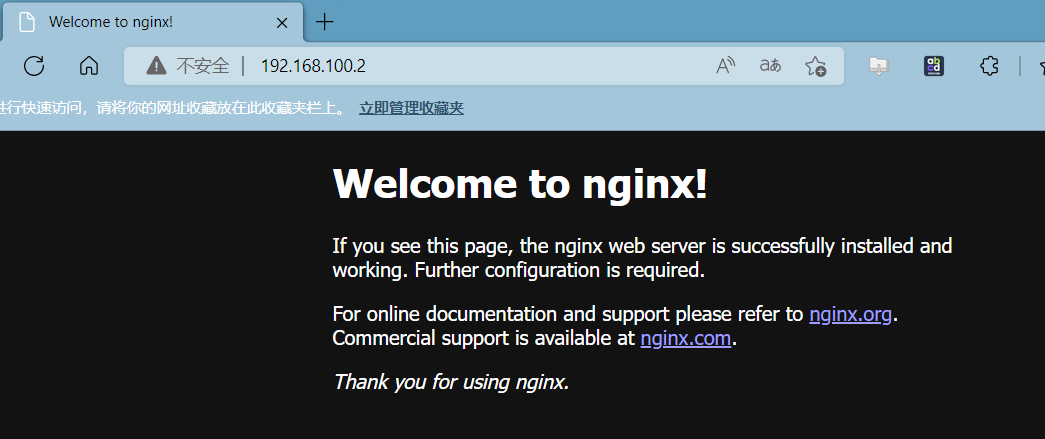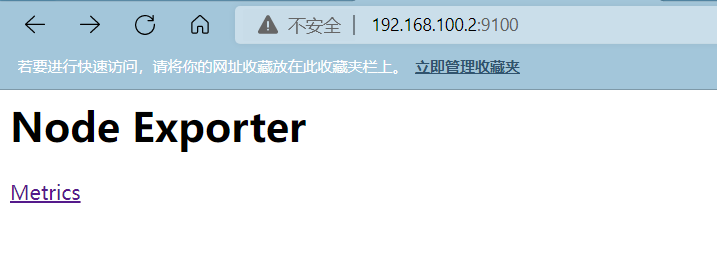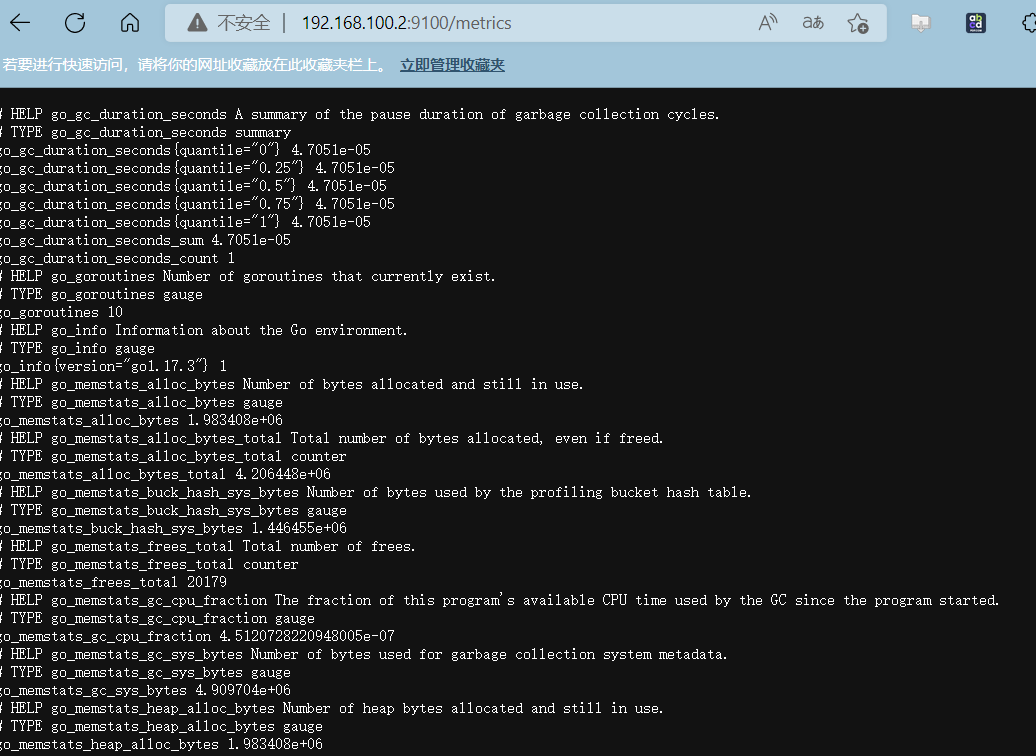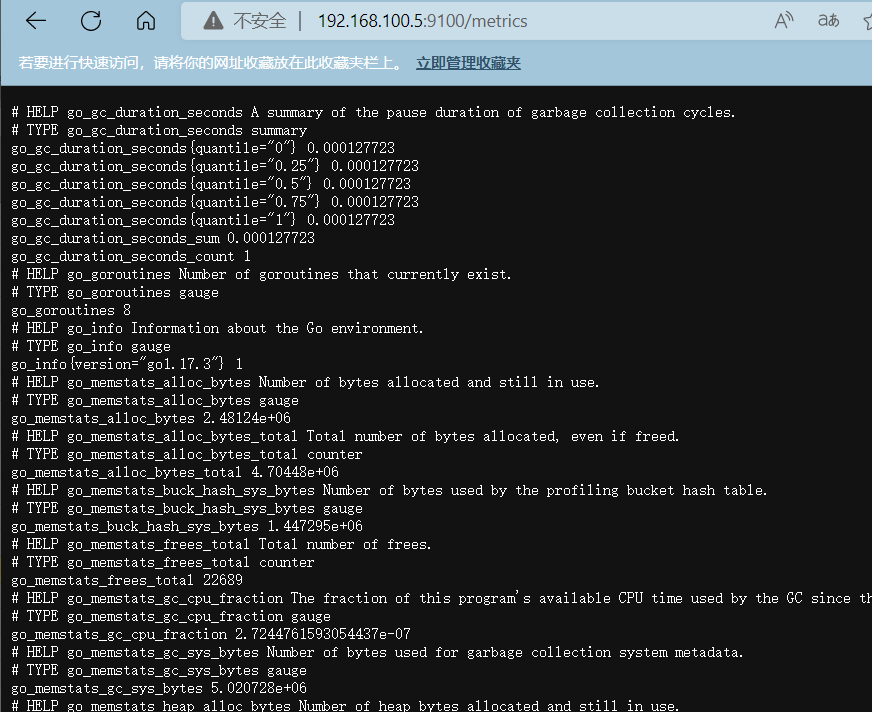基于StatefulSet有状态部署与DaemonSet部署prometheus node-exporter
statefulset有状态应用部署
考虑无状态的pod因素,让每个pod独立,保持pod启动顺序和唯一性。拥有唯一的网络标识符,持久存储。启动顺序有序,例如mysql主从节点
应用场景
为了解决有服务状态的集群部署、集群之间的数据同步问题(Mysql主从等)
稳定的持久化存储:Pod重新调度后访问相同的持久化数据,基于PVC来实现。
稳定的网络标志:Pod重新调度后PodName和HostName不变,基于Headless Service来实现。
有序扩展:在扩展的时候要依据定义的顺序依次依次进行,基于init containers 实现。在下一个Pod运行之前所有Pod必须是Running和Ready状态)。
有序删除,从后到前逐个删除pod。
组成部分
从上面的应用场景可以发现,StatefulSet由以下几个部分组成:
Headless Service,用于定义网络标志(DNS domain)的。
volumeClaimTemplates,用于创建PVC,指定pvc名称大小,pvc必须由存储类提供存储。为每个Pod生成不同的pvc,并绑定pv,从而实现各pod有专用存储。
StatefulSet,定义具体应用,与deployments类似。
deployment和statefulset区别:有身份(具有唯一标识符)
(1)根据主机名+按照一定规则生成域名
(2)每个pod拥有唯一的主机名
(3)唯一域名:格式:
(4)Pod主机名称.service名称.名称空间.svc.cluster.local
部署有状态服务:
声明svc取消ip地址的暴露,将clusterip置位None
root@deploy:/statefulset# kubectl create ns test namespace/test created root@deploy:/statefulset# vim statefulset.yaml apiVersion: apps/v1 kind: StatefulSet metadata: name: web-statefulset namespace: test spec: serviceName: test-statefulset replicas: 2 selector: matchLabels: app: web template: metadata: labels: app: web spec: containers: - image: nginx name: nginx ports: - containerPort: 80 - name: tomcat image: tomcat ports: - containerPort: 8080 --- apiVersion: v1 kind: Service metadata: labels: app: web name: test-statefulset namespace: test spec: clusterIP: None ports: - port: 80 name: nginx protocol: TCP targetPort: 80 - port: 8080 protocol: TCP targetPort: 8080 name: tomcat selector: app: web root@deploy:/statefulset# kubectl apply -f statefulset.yaml
查看statefulset pod
root@deploy:/statefulset# kubectl get pods NAME READY STATUS RESTARTS AGE web-statefulset-0 2/2 Running 0 70s web-statefulset-1 2/2 Running 0 38s
进入到pod测试网络和主机名称
#查看svc root@deploy:/statefulset# kubectl get svc NAME TYPE CLUSTER-IP EXTERNAL-IP PORT(S) AGE test-statefulset ClusterIP None <none> 80/TCP,8080/TCP 8m33s root@deploy:/statefulset# kubectl exec -it web-statefulset-0 -- bash Defaulted container "nginx" out of: nginx, tomcat root@web-statefulset-0:/# cat /etc/hosts # Kubernetes-managed hosts file. 127.0.0.1 localhost ::1 localhost ip6-localhost ip6-loopback fe00::0 ip6-localnet fe00::0 ip6-mcastprefix fe00::1 ip6-allnodes fe00::2 ip6-allrouters 10.200.166.175 web-statefulset-0.test-statefulset.test.svc.cluster.local web-statefulset-0
使用其他namespace下的pod访问test 名称空间下的statefulset应用
root@master1:~# kubectl get pods -n default NAME READY STATUS RESTARTS AGE aliyun-web-deployment-668cb5f7b5-5rnqs 1/1 Running 1 (127m ago) 3d21h aliyun-web-deployment-668cb5f7b5-sgs2g 1/1 Running 1 (127m ago) 3d21h web-deployment-647db54fb5-fkggx 1/1 Running 1 (127m ago) 4d1h web-deployment-647db54fb5-lz64s 1/1 Running 1 (127m ago) 4d1h root@master1:~# kubectl exec -it -n default web-deployment-647db54fb5-lz64s -- curl test-statefulset.test <!DOCTYPE html> <html> <head> <title>Welcome to nginx!</title> <style> html { color-scheme: light dark; } body { width: 35em; margin: 0 auto; font-family: Tahoma, Verdana, Arial, sans-serif; } </style> </head> <body> <h1>Welcome to nginx!</h1> <p>If you see this page, the nginx web server is successfully installed and working. Further configuration is required.</p> <p>For online documentation and support please refer to <a href="http://nginx.org/">nginx.org</a>.<br/> Commercial support is available at <a href="http://nginx.com/">nginx.com</a>.</p> <p><em>Thank you for using nginx.</em></p> </body> </html> root@master1:~#
pod访问测试
root@web-statefulset-0:/usr/local/tomcat# curl web-statefulset-0.test-statefulset.test.svc.cluster.local <!DOCTYPE html> <html> <head> <title>Welcome to nginx!</title> <style> html { color-scheme: light dark; } body { width: 35em; margin: 0 auto; font-family: Tahoma, Verdana, Arial, sans-serif; } </style> </head> <body> <h1>Welcome to nginx!</h1> <p>If you see this page, the nginx web server is successfully installed and working. Further configuration is required.</p> <p>For online documentation and support please refer to <a href="http://nginx.org/">nginx.org</a>.<br/> Commercial support is available at <a href="http://nginx.com/">nginx.com</a>.</p> <p><em>Thank you for using nginx.</em></p> </body> </html>
DaemonSet守护进程
DaemonSet确保集群中每个(部分)node运行一份pod副本,当node加入集群时创建pod,当node离开集群时回收pod。如果删除DaemonSet,其创建的所有pod也被删除,DaemonSet中的pod覆盖整个集群。
DaemonSet配置文件的语法和结构与Deployment几乎完全一样,区别是:
1.kind设为DaemonSet
2.不需replicas
DaemonSet 的一些典型使用场景:
在每个节点上运行集群守护进程
在每个节点上运行日志收集守护进程
在每个节点上运行监控守护进程
设置maser节点污点容忍,在master节点部署pod
root@deploy:/daemonset# kubectl get nodes NAME STATUS ROLES AGE VERSION 192.168.100.2 Ready,SchedulingDisabled master 11d v1.24.3 192.168.100.5 Ready node 11d v1.24.3 192.168.100.6 Ready node 11d v1.24.3
查看master污点
root@deploy:/daemonset# kubectl get nodes NAME STATUS ROLES AGE VERSION 192.168.100.2 Ready,SchedulingDisabled master 11d v1.24.3 192.168.100.5 Ready node 11d v1.24.3 192.168.100.6 Ready node 11d v1.24.3 root@deploy:/daemonset# kubectl describe node 192.168.100.2|grep -i taint Taints: node.kubernetes.io/unschedulable:NoSchedule
创建daemonset,污点容忍key填写master设置的污点key
设置 hostNetwork: true,将pod端口映射在k8s节点
root@deploy:/daemonset# vim daemonset.yaml apiVersion: apps/v1 kind: DaemonSet metadata: labels: app: web name: web namespace: test spec: selector: matchLabels: app: web template: metadata: labels: app: web spec: hostNetwork: true hostPID: true containers: - image: nginx name: nginx imagePullPolicy: IfNotPresent ports: - containerPort: 80 tolerations: - key: "node.kubernetes.io/unschedulable" operator: "Exists" effect: "NoSchedule"

查看k8s节点端口80监听
root@master1:~# lsof -i :80 COMMAND PID USER FD TYPE DEVICE SIZE/OFF NODE NAME nginx 114536 root 7u IPv4 569545 0t0 TCP *:http (LISTEN) nginx 114536 root 8u IPv6 569546 0t0 TCP *:http (LISTEN) nginx 114583 systemd-resolve 7u IPv4 569545 0t0 TCP *:http (LISTEN) nginx 114583 systemd-resolve 8u IPv6 569546 0t0 TCP *:http (LISTEN) nginx 114583 systemd-resolve 13u IPv4 589033 0t0 TCP master1:http->192.168.100.1:60148 (ESTABLISHED) nginx 114584 systemd-resolve 7u IPv4 569545 0t0 TCP *:http (LISTEN) nginx 114584 systemd-resolve 8u IPv6 569546 0t0 TCP *:http (LISTEN)
客户端访问:

部署普罗米修斯node客户端
设置hostNetwork: true将pod端口在k8s节点监听;
设置hostPort: 9100,将pod端口监听在宿主机k8s节点的9100端口
root@deploy:/daemonset# vim prometheus_node.yaml apiVersion: apps/v1 kind: DaemonSet metadata: labels: app: prometheus-node name: prometheus-node-daemonset namespace: test spec: selector: matchLabels: app: prometheus-node template: metadata: labels: app: prometheus-node spec: hostNetwork: true hostPID: true tolerations: - key: "node.kubernetes.io/unschedulable" operator: "Exists" effect: "NoSchedule" containers: - image: prom/node-exporter:v1.3.1 name: prometheus-node imagePullPolicy: IfNotPresent ports: - containerPort: 9100 hostPort: 9100 protocol: TCP name: metrics volumeMounts: - mountPath: /host/proc name: proc - mountPath: /host/sys name: sys - mountPath: /host name: rootfs args: - --path.procfs=/host/proc - --path.sysfs=/host/sys - --path.rootfs=/host volumes: - name: proc hostPath: path: /proc - name: sys hostPath: path: /sys - name: rootfs hostPath: path: /
查看pod在集群中运行

客户端访问:节点端口

master节点

node1节点

node2节点

本文来自博客园,作者:PunchLinux,转载请注明原文链接:https://www.cnblogs.com/punchlinux/p/16561471.html



【推荐】国内首个AI IDE,深度理解中文开发场景,立即下载体验Trae
【推荐】编程新体验,更懂你的AI,立即体验豆包MarsCode编程助手
【推荐】抖音旗下AI助手豆包,你的智能百科全书,全免费不限次数
【推荐】轻量又高性能的 SSH 工具 IShell:AI 加持,快人一步
· 无需6万激活码!GitHub神秘组织3小时极速复刻Manus,手把手教你使用OpenManus搭建本
· C#/.NET/.NET Core优秀项目和框架2025年2月简报
· Manus爆火,是硬核还是营销?
· 终于写完轮子一部分:tcp代理 了,记录一下
· 【杭电多校比赛记录】2025“钉耙编程”中国大学生算法设计春季联赛(1)